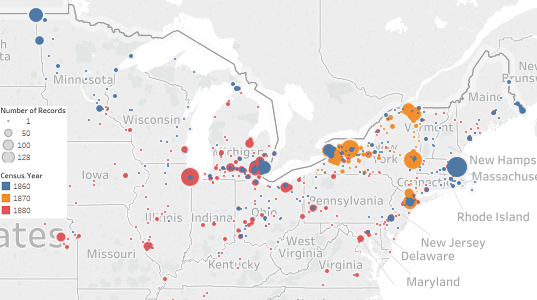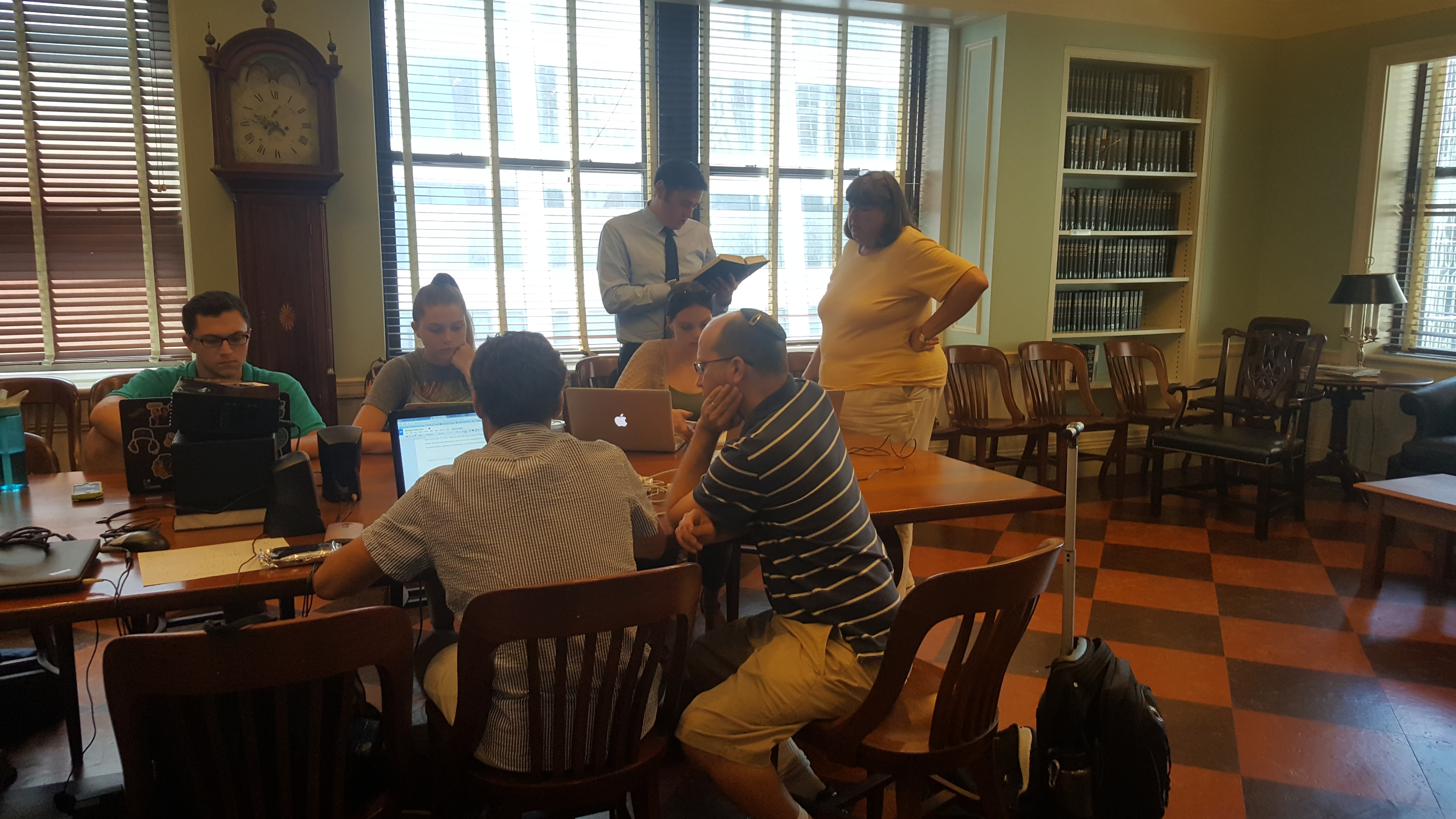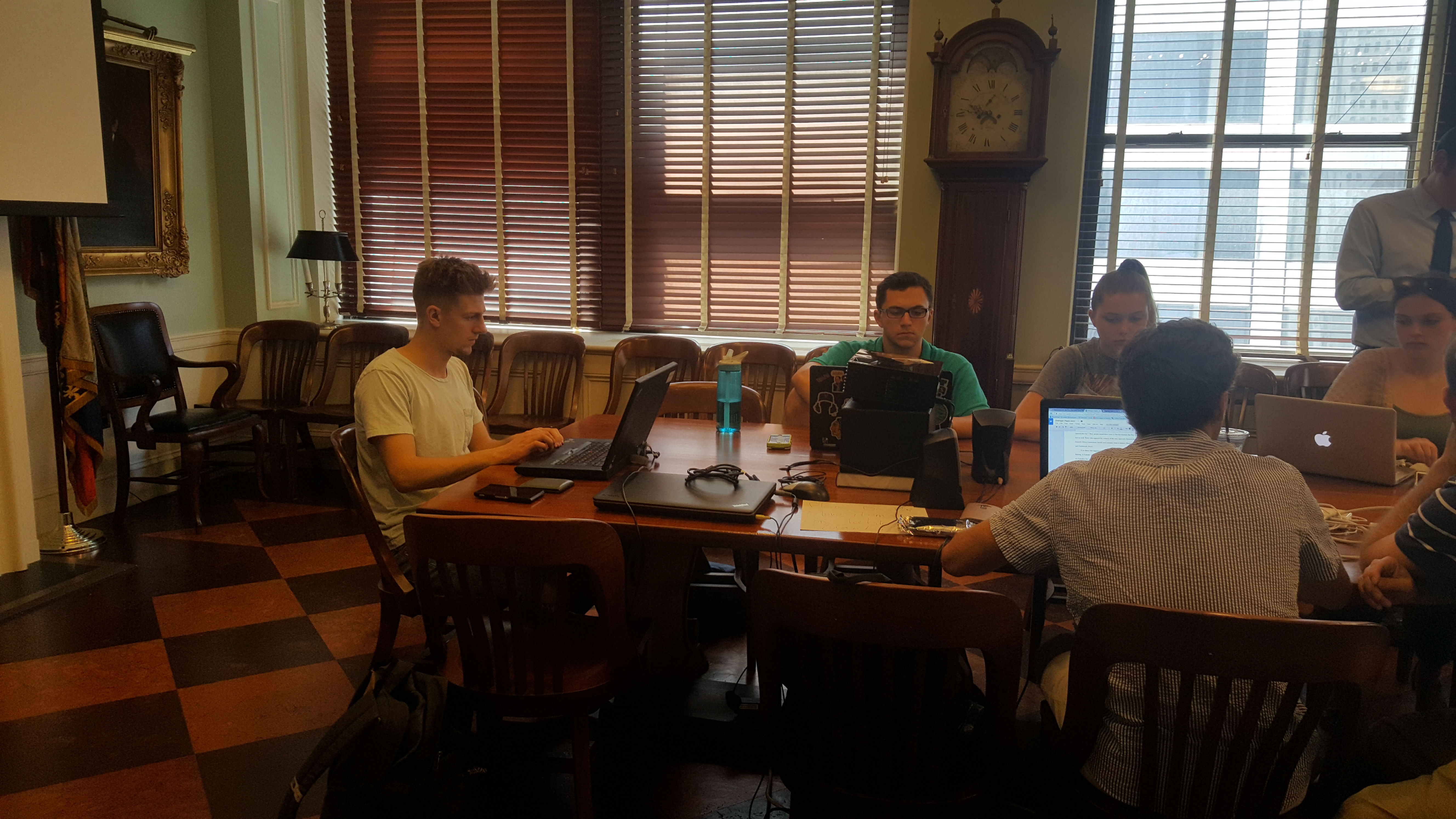This blog post is written by Victoria Thomas, a student at Manhattan College who was part of one of our NYG&B Labs teams this summer. The team assisted Professor Adam Arenson in his project tracking and visualizing migration patterns of African North Americans prior to, during and after the American Civil War. A portion of the project focused on processing and analyzing Civil War pension files of African American Civil War soldiers. The project is still a work in progress, but we are excited to have the students share their updates in a series of blog posts over the next month.
The research I did for Dr. Arenson's African American North American studies project proved to be tedious, at times frustrating, but ultimately rewarding.
As a history major working on the project, I spent a great deal of time consulting and analyzing archival and genealogical records of emancipated slaves and Civil War soldiers during and after Reconstruction.
My goals
One of my goals throughout the research was to piece together the journey of an African American Civil War soldier named George Alexander.
To do this I spent most of my time analyzing old Civil War pension files. Found within these files were depositions that contained information pertaining to the soldier's whereabouts at certain points both during as well as after the war.

Read more about the mapping here.
This information was critical to the overreaching goal of the project, which sought to adequately track the migration patterns of emancipated African Americans during and after Reconstruction and create a visual representation of their migration.
Overcoming challenges: Handwriting & incomplete information
The frustrating bit about this part of the research was first and foremost deciphering the handwritten text of the documents that were often times illegible to someone, such as myself, who has very little experience analyzing old files from the Civil War Era.
However, this is where the expertise and guidance of those working at the New York Genealogical and Biographical Society came in hand. During our meetings at the NYG&B, I was able to bring any questions I had to Susan and Joshua.

and Susan R. Miller at the NYG&B offices.
Of course, with years of experience, they were quickly able to decipher any text that I found troublesome to read. And if they were not able to decipher it themselves they had helpful books on hand that guided me in the right direction.
Though deciphering the text was difficult for me, I've learned that it is not impossible. Rather, it is just another skill I will acquire as I gain more experience in the field.
Another frustrating aspect of the research which was not as easily solvable was the vagueness and ambiguity of many of the depositions which often gave tidbits of information but left out key components such as proper dates and/or names of people and places.
This was difficult because it would leave holes in our research. A geolocation without a date meant we were unable to adequately add that to the visual representation in the end.
What I was able to do was cross-reference the information I was able to find with other documents such as census files found within Ancestry's database. This, however, was seldom useful because often the person was just passing through the town or city rather than having permanent residency there.
The importance of teamwork in research projects
Going into the project, our team was aware of many of the difficulties and quandaries encountered in adequately tracking the movement of escaped or emancipated slaves during and after the Civil War Era.
These difficulties were often the same ones I ran into during my research. However, I found that maintaining good communication with our group members helped us better tackle the minor setbacks we came across.
For example, Jan, our tech member of the group, communicated exactly how he wanted the data inputted into the spreadsheets. Proper data entry was key to producing accurate maps in the end because it allowed him to smoothly and efficiently run his web scraping process.
So if anything was input incorrectly or not according to code, geolocations would not be able to be transcribed. Trial and error as well as good communication skills made data cleanup at the end easier for everyone, as well as ensured the production of accurate visual representations of the data entered.
Despite minor setbacks and frustrating aspects of the research, the project ultimately proved to be rewarding. As a team, through trial and error, we were able to come up with a system that worked for all of us. As an individual working on the research, I've learned to have patience and not expect immediate results.
Analyzing and processing the old pension files proved to be tedious and frustrating at times especially considering the great deal of time and effort that went into analyzing a single file, but being able to visualize the data in the end made it worth it.
Though our goal of creating a visual representation of the data collected was accomplished, there is still so much more that can be done with data. I'm hoping we can continue working forward with the project, and uncover the countless lost stories of our African American North American population.
